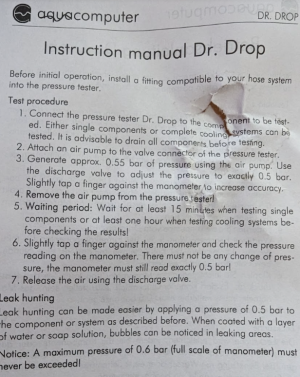For the first time I'm trying to test the components before mounting. At first I though the Dr. Drop was defective as everything leaked air. Some as I was pumping and others after 5-10 minutes.
I've seen many say to only hand tighten the fittings but I'm using barbed fittings and I've always tightened them with a tool. The only way to stop the air for leaking is to tighten the fittings even more that I normally would. This is a little scary on the GPU block with an Acrylic header.
I'm guessing they would be fine even if air is escaping at 0.5BAR.
Just testing a block is a pain to know what fitting to check let alone the whole loop with like 15 fittings.
I've seen many say to only hand tighten the fittings but I'm using barbed fittings and I've always tightened them with a tool. The only way to stop the air for leaking is to tighten the fittings even more that I normally would. This is a little scary on the GPU block with an Acrylic header.
I'm guessing they would be fine even if air is escaping at 0.5BAR.
Just testing a block is a pain to know what fitting to check let alone the whole loop with like 15 fittings.
![[H]ard|Forum](/styles/hardforum/xenforo/logo_dark.png)

